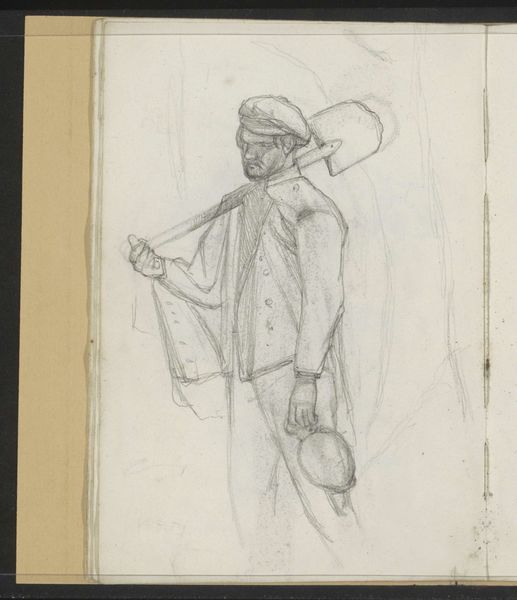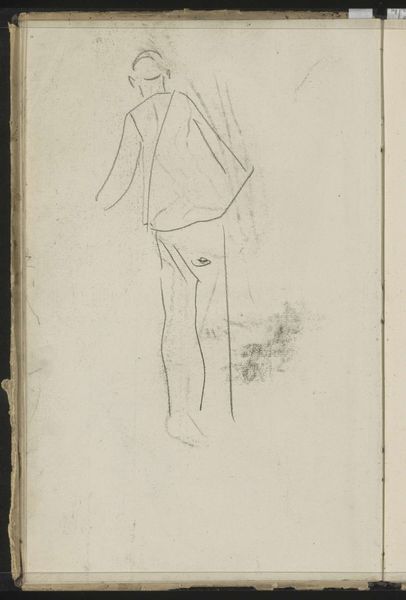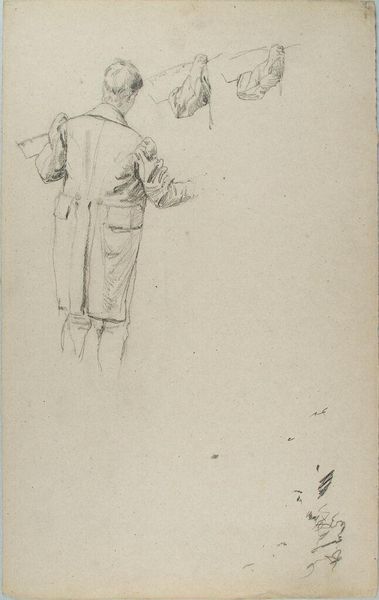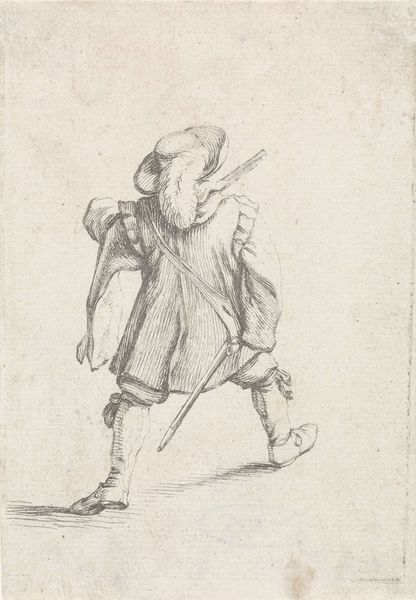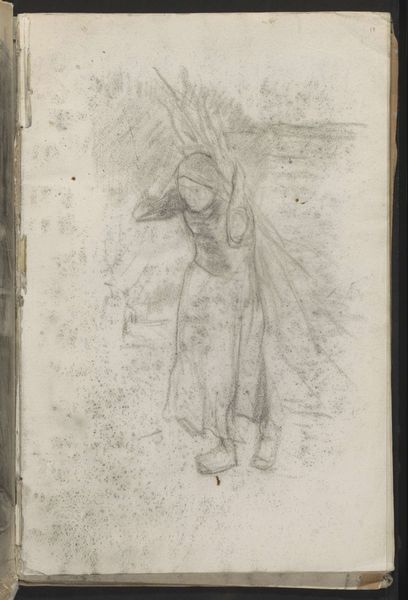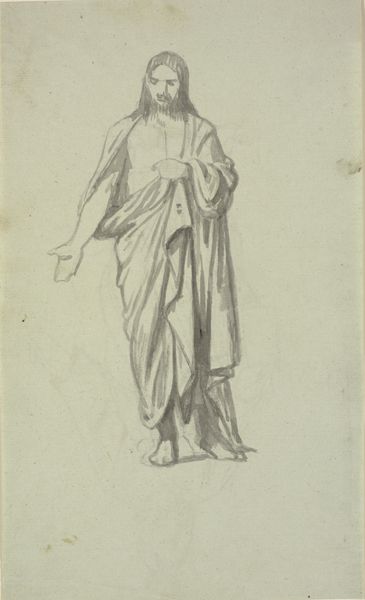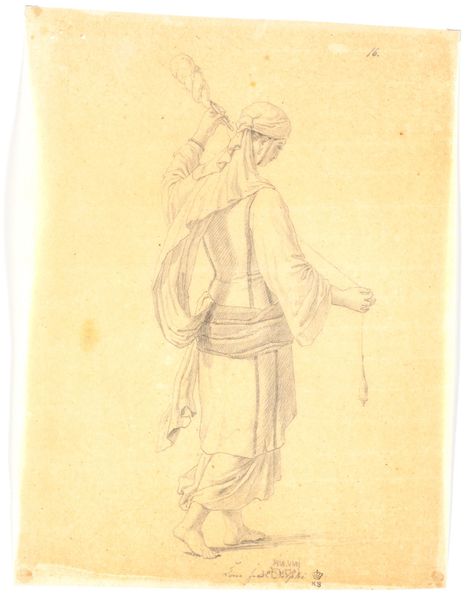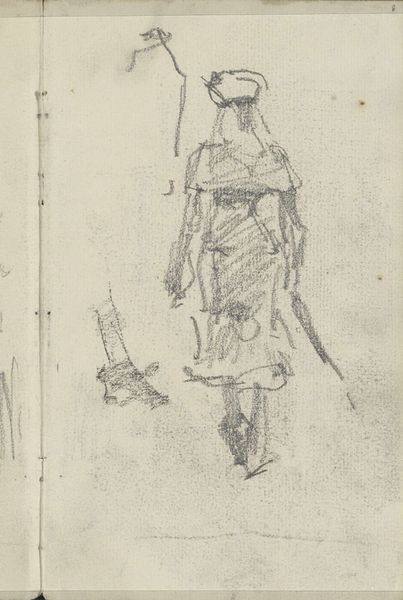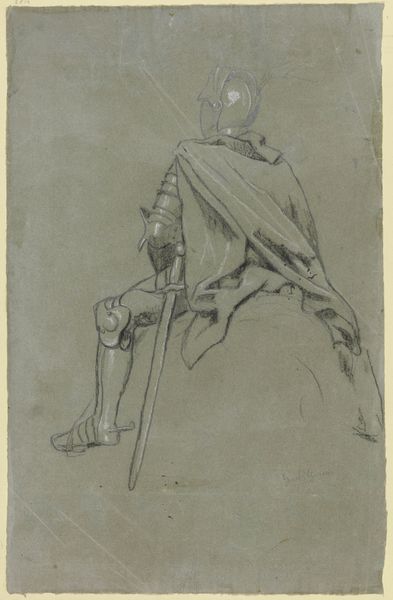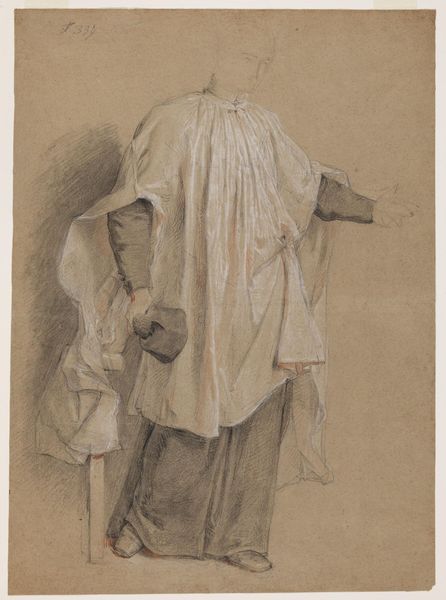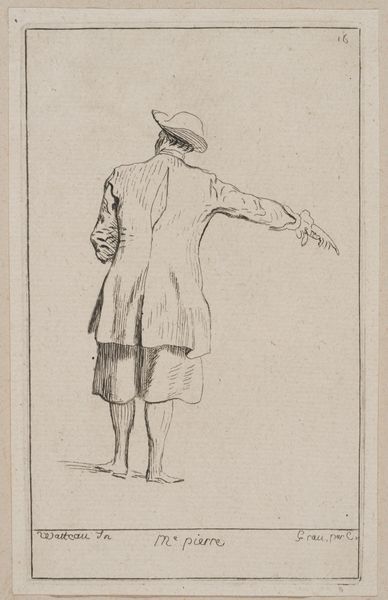
drawing, pencil
#
portrait
#
drawing
#
imaginative character sketch
#
light pencil work
#
impressionism
#
sketch book
#
incomplete sketchy
#
personal sketchbook
#
character sketch
#
ink drawing experimentation
#
pen-ink sketch
#
pencil
#
sketchbook drawing
#
genre-painting
#
sketchbook art
#
realism
Copyright: Rijks Museum: Open Domain
Curator: This is "Man met een schop," or "Man with a Shovel," a pencil drawing by Jozef Israëls, dating roughly from 1834 to 1911. It's currently held in the Rijksmuseum. Editor: Ah, he looks like a weary traveler. The sketchiness of the lines gives him a sort of spectral quality, as if he’s walked straight out of a folktale about hard labor and redemption. Curator: Yes, it's tempting to view him as symbolic, but I think focusing on the physical reality Israëls captures is more compelling. The simple pencil on paper foregrounds the artist’s process and, indeed, the laborer’s own toil. It almost invites a consideration of artistic labor in parallel. Editor: I suppose, but something about the incompleteness, that fleeting moment captured...it whispers of something beyond the immediate. That shovel feels heavier than just a tool; it’s weighted with unspoken stories. Did Israëls intend a social commentary, perhaps? Curator: Possibly, but more likely, I suspect this was a study of a specific figure, someone Israëls observed in his environment. The materiality, the modest resources, and the straightforward depiction suggests an interest in chronicling labor. The drawing style suggests an informal register that humanizes its subject matter. Editor: Still, the very act of choosing to depict a common worker elevates him, doesn't it? Turning the mundane into art imbues him with a certain dignity. I imagine the dust, the sweat, and the quiet strength...a kind of nobility. Curator: Perhaps... although focusing on artistic intention might be less fruitful than recognizing that Israëls used readily available materials and techniques. It connects the image both to the practicalities of making art and also to the practicalities of everyday work and living. Editor: I find it moving, the vulnerability in those pencil lines. He looks solitary, perhaps burdened. It sparks something resonant. But your reading gives him more tangible weight, a worker as simply drawn, not some embellished, stylized romantic ideal. It provides a contrasting and valid analysis of an otherwise unassuming portrait. Curator: I appreciate the point of resonance. It underlines the value in focusing on the interplay between intention, reception, labor, and social factors.
Comments
No comments
Be the first to comment and join the conversation on the ultimate creative platform.
